Botswana Wildlife Behaviour
Learn about animal behavior and why animals do what they do in the wild - and what signals to look out for while you are on safari in Botswana.
Understanding Botswana Wildlife Behaviour – A Guide to Animal Habits
Discover incredible insights into Botswana's wildlife behaviour, from predator-prey dynamics to migration habits. Explore how animal behaviours adapt to the African wilderness.
Why is Wildlife Behaviour in Botswana Unique?
Botswana’s vast ecosystems from the lush waterways of the Okavango Delta to salt pans of Makgadikgadi create diverse habitats that influences animal behaviour in unique and remarkable ways. For instance, elephants migrate based on water availability, and lions adjust hunting techniques depending on terrain. The dry season (May to October) showcases Botswana wilidlife gathering around waterholes, while the wet season (November to March) unveils dramatic migrations and breeding habits.
Predator and Prey Dynamics
Lions in Botswana are among the only prides known to hunt elephants under dire conditions in the dry season. Meanwhile, wild dogs, famed for their cooperative pack behaviour, perform intricate hunts that rely on speed and teamwork to outwit prey like impala and kudu.
Seasonal Wildlife Habits
During the wet season, vast herds of zebras migrate through the Makgadikgadi Pans in search of fresh grazing land, a spectacle driven by an ancient instinct to survive. Elephants, known for their remarkable memory and familial bonds, can be seen trekking across vast distances to reliable water sources during drier months.
Nocturnal Animal Behaviour
As the sun sets, Botswana’s wilderness transforms. Stealthy leopards quietly navigate riverbanks in search of prey, while hyenas, opportunistic hunters, patrol open plains. Wildlife enthusiasts staying on night safaris may even witness the lesser-known activities of pangolins or aardwolves, shedding light on a side of Botswana that few get to see.
Witness Wildlife Behaviour Up Close
Botswana offers endless opportunities to delve deeper into the fascinating world of animal behaviour. Learn more about wildlife behaviour on a guided Botswana wildlife safari
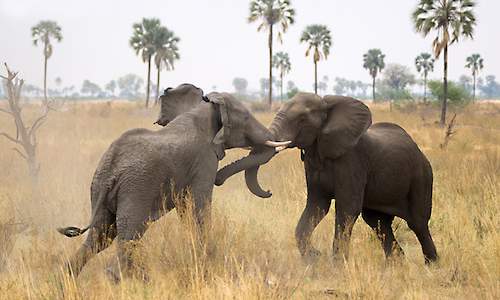
This Botswana Wildlife Guide talks about communication patterns of wildlife species - from warning calls to Elephants emitting ultra-sonic s...
more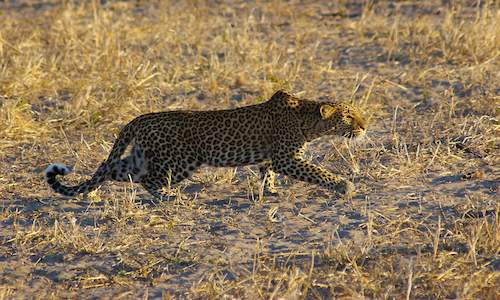
This Botswana Wildlife Guide about the animal sense of sight shows how the animal's developed eyes are needed for moving, finding food and a...
more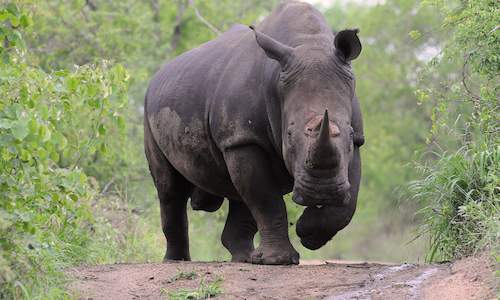
The sense of smell is widely used in animal bevaviour. This Botswana Wildlife Guide shows how wildlife can detect food, competitors, sexual ...
more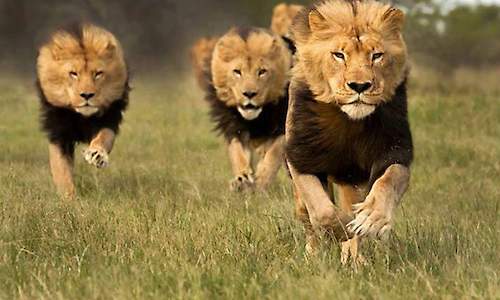
The regions of northern Botswana are the Okavango Delta, Central Kalahari and Savute. Lions living in Savute are known to be Elephant killer...
more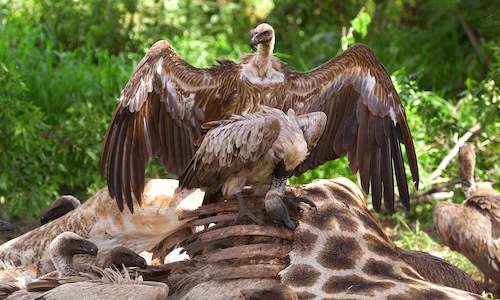
This Botswana Wildlife Guide about scavenging in the African wilderness will clear up if Hyenas or Lions are scavengers. Find out on a Botsw...
more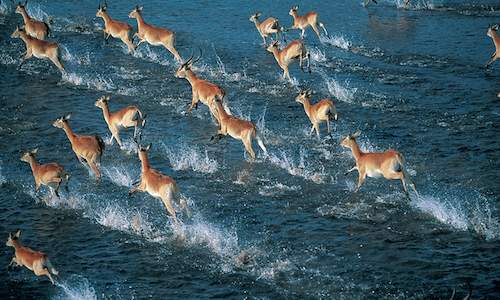
This Botswana Wildlife Guide describes the various habitats from the Kalahari Desert to the Makgadikgadi Salt Pans, Linyanti Swamp and Okava...
more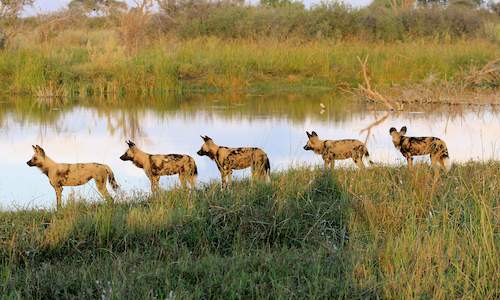
This Botswana Wildlife Guide explains area specific differences of species. The differentiation can be made between wildlife living in wetla...
more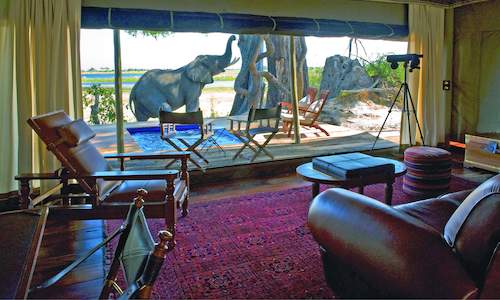
Due to human carelessness some species such as Hyena, Baboons and Monkeys begin to associate humans with food and then will become a 'proble...
more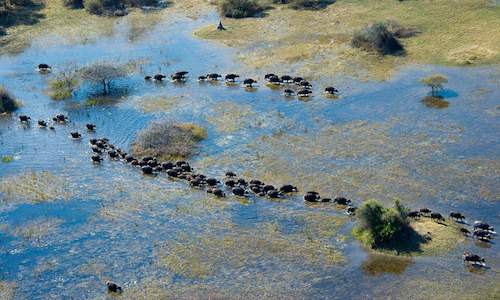
This Botswana Wildlife Guide gives ideas about why animals are moving. It explains zebra migrations, nomadism and the role of competition...
more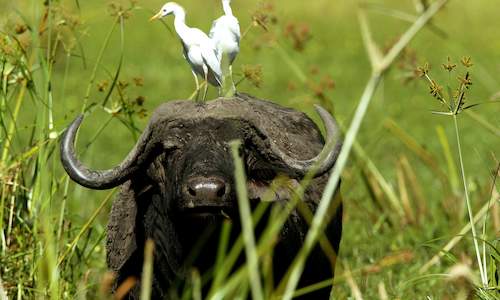
In this Botswana Wildlife Guide the interaction between specific species, called symbiosis, is described. Animals warn each other or pick pa...
more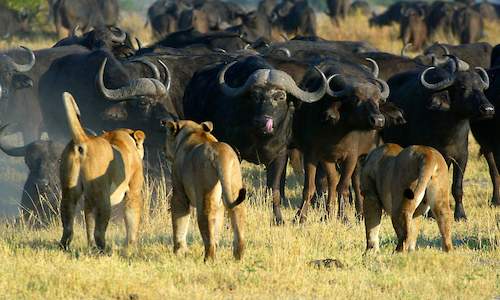
Inter-species dominance comes into play when food is scarce. This Botswana Wildlife Guide tells of Giraffes fighting back and an interaction...
more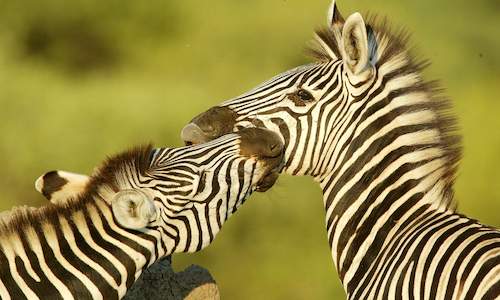
This Botswana Guide describes how species communicate with each other, what their alarm or distress calls mean or what their body posture te...
more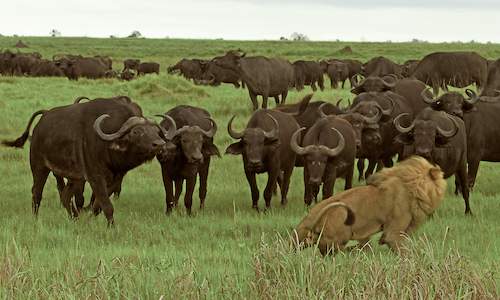
This Botswana Wildlife Guide explains which of the predator hunting techniques, stamina, stealth, power, speed, patience, smell, sound or si...
more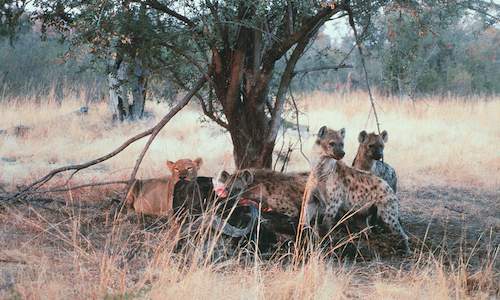
It's interesting that hyenas are dominant over lions. This Botswana guide explains why the king of the beasts is not on top of the predator ...
more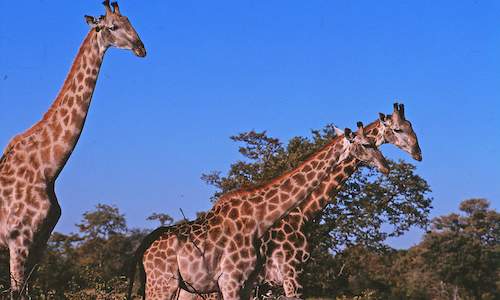
This Botswana Wildlife Behaviour Guide explains the differences between grazers, browsers or carnivores. It also describes meat-eating herbi...
more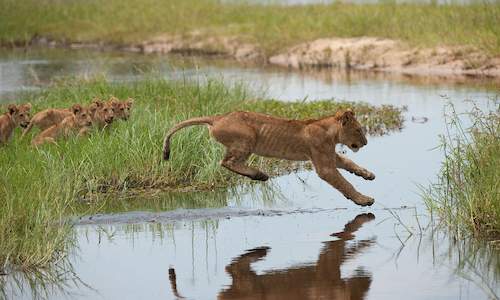
Playing is very important for young wildlife. This Botswana Wildlife Guide explains how cubs learn important survival techniques while playi...
more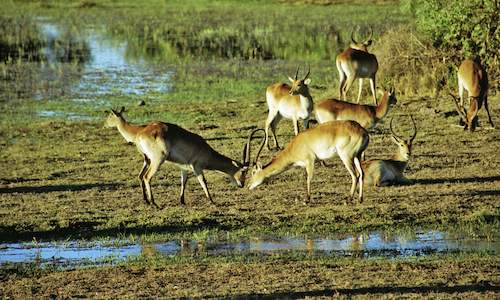
This Botswana Wildlife Guide explains the different mating rituals and how animals reach dominance. It's interesting that Hyena society is f...
more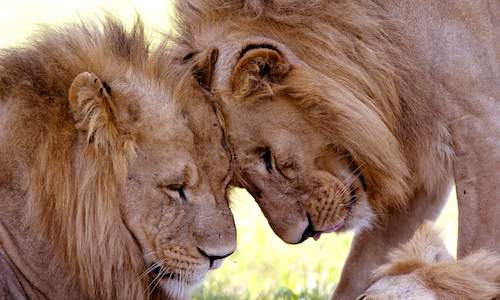
This Botswana animal behaviour guide explains that animals show emotion. For example, Elephants mourn their dead or baboons carry their dead...
more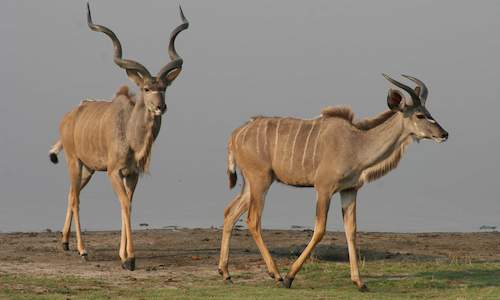
If an animal has small or large ears or pinnae depends on its habitat. This Botswana Wildlife Guide about the hearing sense of animals expla...
more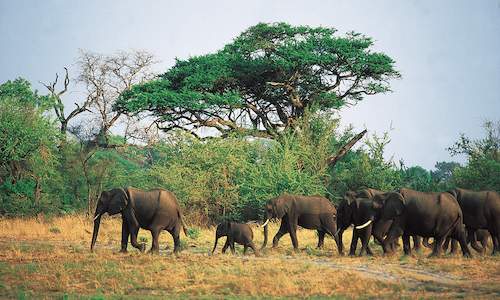
Botswana is known to have the highest elephant population in Africa, with the Chobe River supporting up to 50 000 in the dry season when the...
more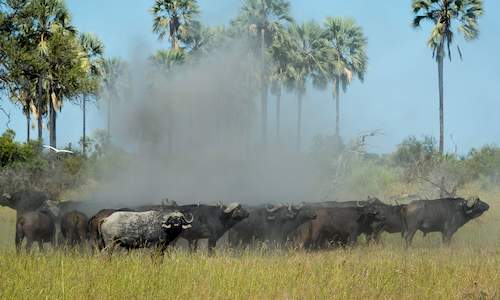
Botswana is renowned for having the greatest concentration of Elephants in Africa, but what is not mentioned is that other animals also occu...
more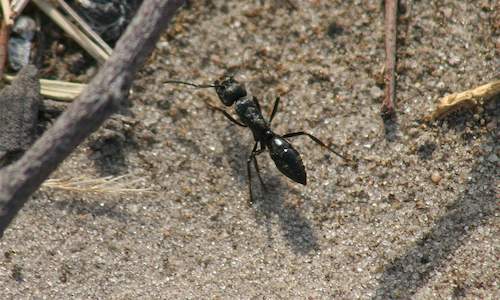
The Matabele ants are aptly named after an African tribe that destroyed everything in their path as they swept through south and central Afr...
more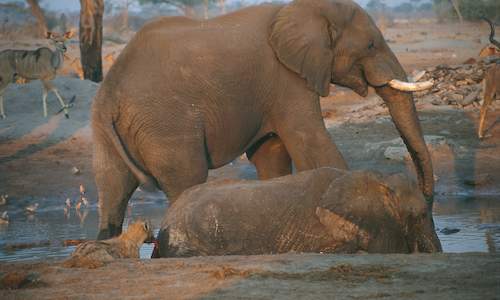
Throughout history animals have been affected by environmental factors, with some species dying out and others adapting to the changes and b...
more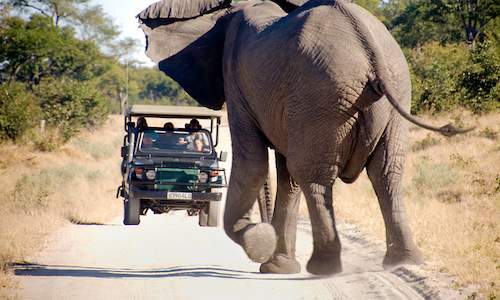
Animal Behaviour changes over time to adapt to changing climatic and situational changes and today the human impact is felt mostly when it c...
more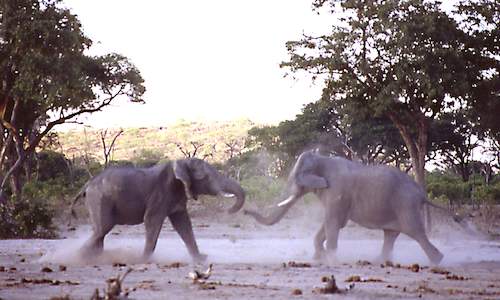
The Botswana Wildlife explains that most animals have territories or home ranges and the sizes are affected by availability of food and terr...
more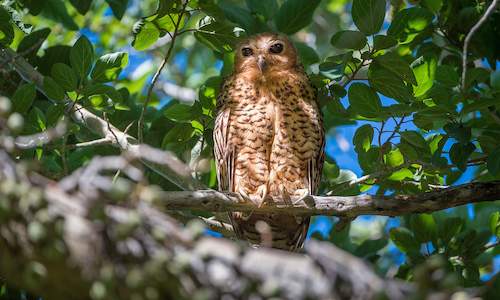
The Pel's Fishing Owl is the second largest owl in Africa. It feeds almost exclusively on fish and lives in dense forests near rivers. They ...
more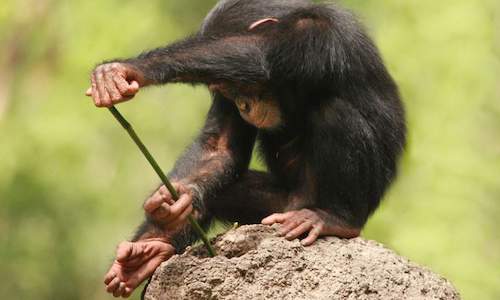
Although once presumed to be only the preserve of a human, animals are now known to use assistance in the form of physical objects such as t...
more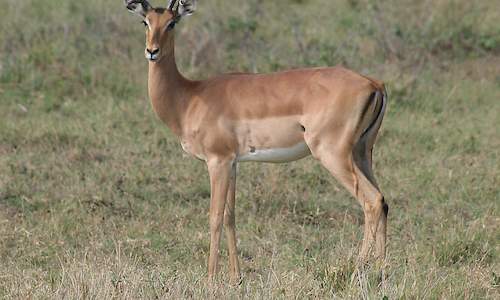
The general view of African wildlife is one of healthy animals roaming the plains, with the sick and wounded not surviving, but there are ma...
more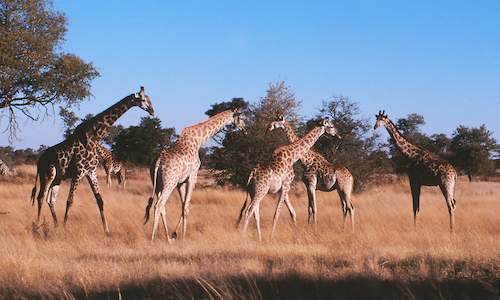
One of the fascinating aspects of the wildlife of Africa is the distinctive colours and patterns on show, and behaviour associated with each...
more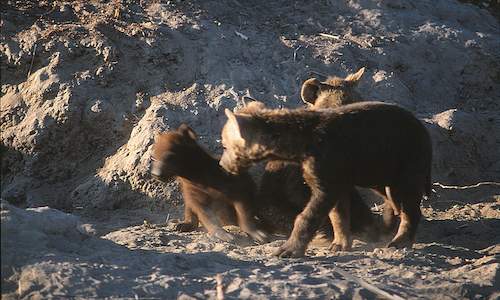
Many aspects of wildlife behavior do not fit the African safari beauty of glossy brochures, with animal infanticide being particularly grues...
more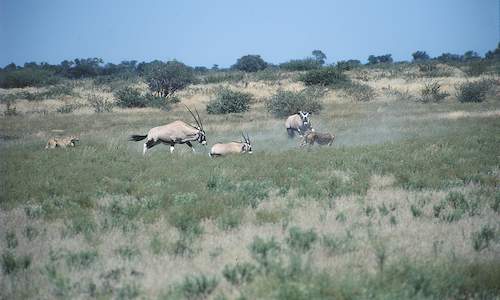
The African Wilderness, with all its predators, is a place where adapting survival skills is key and many species have adapted unique ways t...
more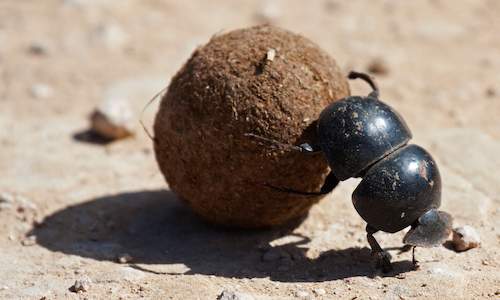
Animal dung, so often overlooked when on safari in Africa, can provide researchers with a great deal of information regarding the feeding ha...
more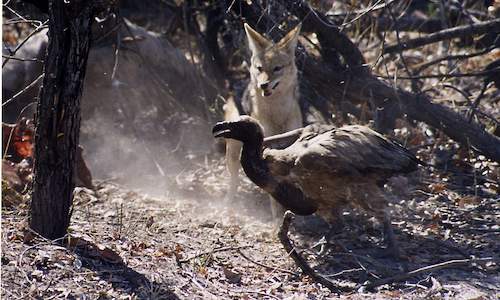
Animals adapt various strategies to survive in the wild, and no place showcases the adaptations of wildlife better than in the spectacular w...
more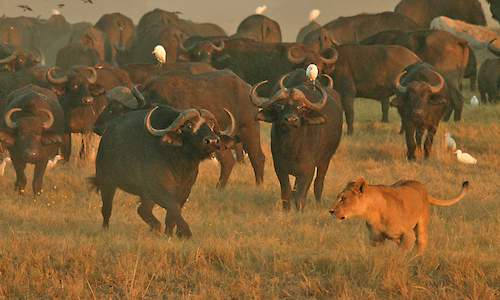
The African wilderness is a dangerous place for those with limited survival skills, and as such the animals that live there have all develop...
more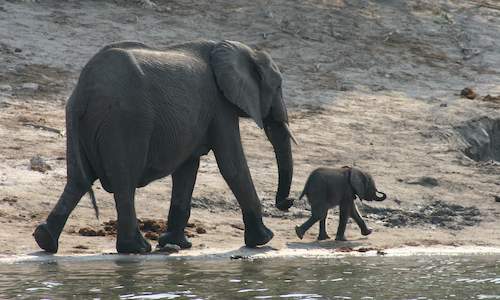
The dangers for animals in Africa begin from the day of their birth and because of this they have to adapt survival techniques from the very...
more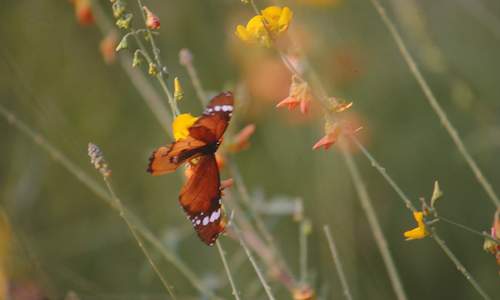
One of the most common survival techniques animals use is camouflage. They have adapted to their environment. The animals of Africa have ada...
more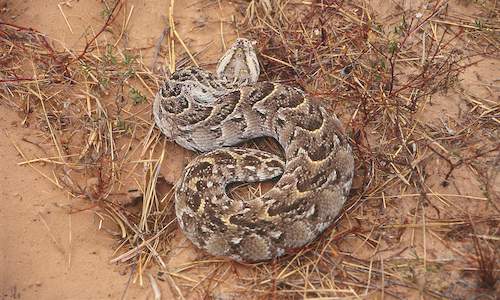
Snakes are a huge part of the psyche of humankind, striking irrational fear into the minds of most people. Growing up on a farm where snakes...
more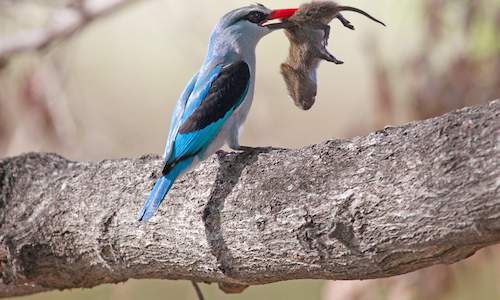
The Kingfishers of Africa are some of the most colourful creatures of the African wilderness and despite their name feed on a variety of pre...
more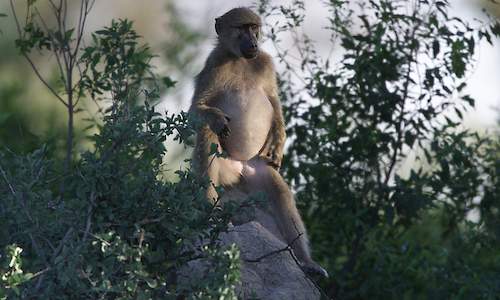
Baboons are fascinating to watch and on many occasions they have provided a highlight during game drives. I have often wondered at our fasci...
more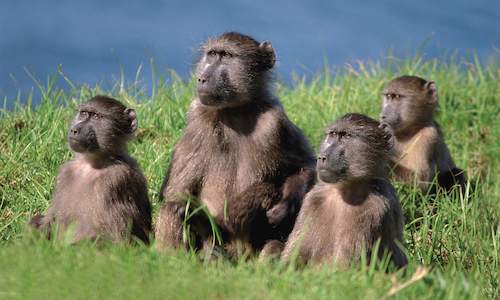
Are animals capable of thought or are their actions based on instinct? I know many subscribe to the latter but I have seen one incident that...
more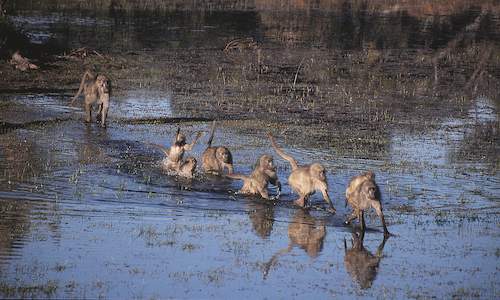
I studied a troop of baboons in the Okavango Delta for over a year. The troop roosted in the trees on an island across from the lodge and ev...
more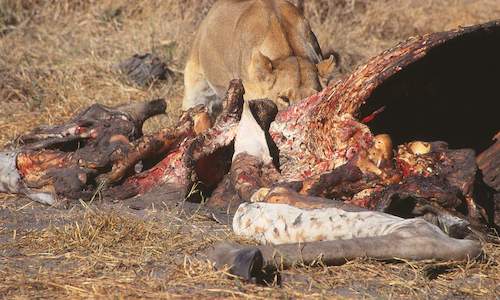
Journal Entry, 1997: The lioness got up from the elephant carcass and walked towards the waterhole. She was soon followed by two others. As ...
more
I have often been ridiculed for my fascination with 'dung and dust'. In today's mindset, a wilderness experience is considered primarily a b...
more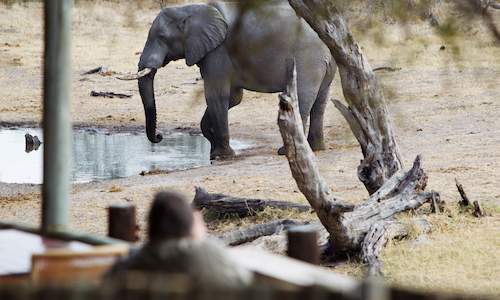
Botswana is a wildlife paradise and is home to some very interesting animal behaviour that has evolved through natural forces and through hu...
more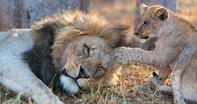

 This Botswana Wildlife Guide talks about communication patterns of wildlife species - from warning calls to Elephants emitting ultra-sonic s...
This Botswana Wildlife Guide talks about communication patterns of wildlife species - from warning calls to Elephants emitting ultra-sonic s... This Botswana Wildlife Guide about the animal sense of sight shows how the animal's developed eyes are needed for moving, finding food and a...
This Botswana Wildlife Guide about the animal sense of sight shows how the animal's developed eyes are needed for moving, finding food and a... The sense of smell is widely used in animal bevaviour. This Botswana Wildlife Guide shows how wildlife can detect food, competitors, sexual ...
The sense of smell is widely used in animal bevaviour. This Botswana Wildlife Guide shows how wildlife can detect food, competitors, sexual ... The regions of northern Botswana are the Okavango Delta, Central Kalahari and Savute. Lions living in Savute are known to be Elephant killer...
The regions of northern Botswana are the Okavango Delta, Central Kalahari and Savute. Lions living in Savute are known to be Elephant killer... This Botswana Wildlife Guide about scavenging in the African wilderness will clear up if Hyenas or Lions are scavengers. Find out on a Botsw...
This Botswana Wildlife Guide about scavenging in the African wilderness will clear up if Hyenas or Lions are scavengers. Find out on a Botsw... This Botswana Wildlife Guide describes the various habitats from the Kalahari Desert to the Makgadikgadi Salt Pans, Linyanti Swamp and Okava...
This Botswana Wildlife Guide describes the various habitats from the Kalahari Desert to the Makgadikgadi Salt Pans, Linyanti Swamp and Okava... This Botswana Wildlife Guide explains area specific differences of species. The differentiation can be made between wildlife living in wetla...
This Botswana Wildlife Guide explains area specific differences of species. The differentiation can be made between wildlife living in wetla... Due to human carelessness some species such as Hyena, Baboons and Monkeys begin to associate humans with food and then will become a 'proble...
Due to human carelessness some species such as Hyena, Baboons and Monkeys begin to associate humans with food and then will become a 'proble... This Botswana Wildlife Guide gives ideas about why animals are moving. It explains zebra migrations, nomadism and the role of competition...
This Botswana Wildlife Guide gives ideas about why animals are moving. It explains zebra migrations, nomadism and the role of competition... In this Botswana Wildlife Guide the interaction between specific species, called symbiosis, is described. Animals warn each other or pick pa...
In this Botswana Wildlife Guide the interaction between specific species, called symbiosis, is described. Animals warn each other or pick pa... Inter-species dominance comes into play when food is scarce. This Botswana Wildlife Guide tells of Giraffes fighting back and an interaction...
Inter-species dominance comes into play when food is scarce. This Botswana Wildlife Guide tells of Giraffes fighting back and an interaction... This Botswana Guide describes how species communicate with each other, what their alarm or distress calls mean or what their body posture te...
This Botswana Guide describes how species communicate with each other, what their alarm or distress calls mean or what their body posture te... This Botswana Wildlife Guide explains which of the predator hunting techniques, stamina, stealth, power, speed, patience, smell, sound or si...
This Botswana Wildlife Guide explains which of the predator hunting techniques, stamina, stealth, power, speed, patience, smell, sound or si... It's interesting that hyenas are dominant over lions. This Botswana guide explains why the king of the beasts is not on top of the predator ...
It's interesting that hyenas are dominant over lions. This Botswana guide explains why the king of the beasts is not on top of the predator ... This Botswana Wildlife Behaviour Guide explains the differences between grazers, browsers or carnivores. It also describes meat-eating herbi...
This Botswana Wildlife Behaviour Guide explains the differences between grazers, browsers or carnivores. It also describes meat-eating herbi... Playing is very important for young wildlife. This Botswana Wildlife Guide explains how cubs learn important survival techniques while playi...
Playing is very important for young wildlife. This Botswana Wildlife Guide explains how cubs learn important survival techniques while playi... This Botswana Wildlife Guide explains the different mating rituals and how animals reach dominance. It's interesting that Hyena society is f...
This Botswana Wildlife Guide explains the different mating rituals and how animals reach dominance. It's interesting that Hyena society is f... This Botswana animal behaviour guide explains that animals show emotion. For example, Elephants mourn their dead or baboons carry their dead...
This Botswana animal behaviour guide explains that animals show emotion. For example, Elephants mourn their dead or baboons carry their dead... If an animal has small or large ears or pinnae depends on its habitat. This Botswana Wildlife Guide about the hearing sense of animals expla...
If an animal has small or large ears or pinnae depends on its habitat. This Botswana Wildlife Guide about the hearing sense of animals expla... Botswana is known to have the highest elephant population in Africa, with the Chobe River supporting up to 50 000 in the dry season when the...
Botswana is known to have the highest elephant population in Africa, with the Chobe River supporting up to 50 000 in the dry season when the... Botswana is renowned for having the greatest concentration of Elephants in Africa, but what is not mentioned is that other animals also occu...
Botswana is renowned for having the greatest concentration of Elephants in Africa, but what is not mentioned is that other animals also occu... The Matabele ants are aptly named after an African tribe that destroyed everything in their path as they swept through south and central Afr...
The Matabele ants are aptly named after an African tribe that destroyed everything in their path as they swept through south and central Afr... Throughout history animals have been affected by environmental factors, with some species dying out and others adapting to the changes and b...
Throughout history animals have been affected by environmental factors, with some species dying out and others adapting to the changes and b... Animal Behaviour changes over time to adapt to changing climatic and situational changes and today the human impact is felt mostly when it c...
Animal Behaviour changes over time to adapt to changing climatic and situational changes and today the human impact is felt mostly when it c... The Botswana Wildlife explains that most animals have territories or home ranges and the sizes are affected by availability of food and terr...
The Botswana Wildlife explains that most animals have territories or home ranges and the sizes are affected by availability of food and terr... The Pel's Fishing Owl is the second largest owl in Africa. It feeds almost exclusively on fish and lives in dense forests near rivers. They ...
The Pel's Fishing Owl is the second largest owl in Africa. It feeds almost exclusively on fish and lives in dense forests near rivers. They ... Although once presumed to be only the preserve of a human, animals are now known to use assistance in the form of physical objects such as t...
Although once presumed to be only the preserve of a human, animals are now known to use assistance in the form of physical objects such as t... The general view of African wildlife is one of healthy animals roaming the plains, with the sick and wounded not surviving, but there are ma...
The general view of African wildlife is one of healthy animals roaming the plains, with the sick and wounded not surviving, but there are ma... One of the fascinating aspects of the wildlife of Africa is the distinctive colours and patterns on show, and behaviour associated with each...
One of the fascinating aspects of the wildlife of Africa is the distinctive colours and patterns on show, and behaviour associated with each... Many aspects of wildlife behavior do not fit the African safari beauty of glossy brochures, with animal infanticide being particularly grues...
Many aspects of wildlife behavior do not fit the African safari beauty of glossy brochures, with animal infanticide being particularly grues... The African Wilderness, with all its predators, is a place where adapting survival skills is key and many species have adapted unique ways t...
The African Wilderness, with all its predators, is a place where adapting survival skills is key and many species have adapted unique ways t... Animal dung, so often overlooked when on safari in Africa, can provide researchers with a great deal of information regarding the feeding ha...
Animal dung, so often overlooked when on safari in Africa, can provide researchers with a great deal of information regarding the feeding ha... Animals adapt various strategies to survive in the wild, and no place showcases the adaptations of wildlife better than in the spectacular w...
Animals adapt various strategies to survive in the wild, and no place showcases the adaptations of wildlife better than in the spectacular w... The African wilderness is a dangerous place for those with limited survival skills, and as such the animals that live there have all develop...
The African wilderness is a dangerous place for those with limited survival skills, and as such the animals that live there have all develop... The dangers for animals in Africa begin from the day of their birth and because of this they have to adapt survival techniques from the very...
The dangers for animals in Africa begin from the day of their birth and because of this they have to adapt survival techniques from the very... One of the most common survival techniques animals use is camouflage. They have adapted to their environment. The animals of Africa have ada...
One of the most common survival techniques animals use is camouflage. They have adapted to their environment. The animals of Africa have ada... Snakes are a huge part of the psyche of humankind, striking irrational fear into the minds of most people. Growing up on a farm where snakes...
Snakes are a huge part of the psyche of humankind, striking irrational fear into the minds of most people. Growing up on a farm where snakes... The Kingfishers of Africa are some of the most colourful creatures of the African wilderness and despite their name feed on a variety of pre...
The Kingfishers of Africa are some of the most colourful creatures of the African wilderness and despite their name feed on a variety of pre... Baboons are fascinating to watch and on many occasions they have provided a highlight during game drives. I have often wondered at our fasci...
Baboons are fascinating to watch and on many occasions they have provided a highlight during game drives. I have often wondered at our fasci... Are animals capable of thought or are their actions based on instinct? I know many subscribe to the latter but I have seen one incident that...
Are animals capable of thought or are their actions based on instinct? I know many subscribe to the latter but I have seen one incident that... I studied a troop of baboons in the Okavango Delta for over a year. The troop roosted in the trees on an island across from the lodge and ev...
I studied a troop of baboons in the Okavango Delta for over a year. The troop roosted in the trees on an island across from the lodge and ev... Journal Entry, 1997: The lioness got up from the elephant carcass and walked towards the waterhole. She was soon followed by two others. As ...
Journal Entry, 1997: The lioness got up from the elephant carcass and walked towards the waterhole. She was soon followed by two others. As ... Botswana is a wildlife paradise and is home to some very interesting animal behaviour that has evolved through natural forces and through hu...
Botswana is a wildlife paradise and is home to some very interesting animal behaviour that has evolved through natural forces and through hu...